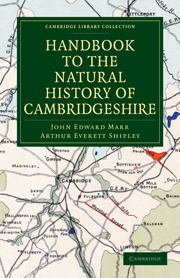Book contents
- Frontmatter
- PREFACE
- Contents
- ADDENDA AND CORRIGENDA
- PHYSIOGRAPHY
- GEOLOGY
- VERTEBRATE PALÆONTOLOGY
- ZOOLOGY
- Mammals
- Birds
- Reptiles and Amphibians
- Fishes
- Mollusca
- Insects: Introduction
- Insects: Orthoptera
- Insects: Neuroptera
- Insects: Hemiptera
- Insects: Coleoptera
- Insects: Lepidoptera
- Insects: Diptera
- Insects: Hymenoptera
- Myriapoda
- Arachnida
- Crustacea
- FLORA
- PREHISTORIC ARCHÆOLOGY
- Appendix to the Article on the Mollusca
- INDEX
- Plate section
Insects: Diptera
Published online by Cambridge University Press: 10 November 2010
- Frontmatter
- PREFACE
- Contents
- ADDENDA AND CORRIGENDA
- PHYSIOGRAPHY
- GEOLOGY
- VERTEBRATE PALÆONTOLOGY
- ZOOLOGY
- Mammals
- Birds
- Reptiles and Amphibians
- Fishes
- Mollusca
- Insects: Introduction
- Insects: Orthoptera
- Insects: Neuroptera
- Insects: Hemiptera
- Insects: Coleoptera
- Insects: Lepidoptera
- Insects: Diptera
- Insects: Hymenoptera
- Myriapoda
- Arachnida
- Crustacea
- FLORA
- PREHISTORIC ARCHÆOLOGY
- Appendix to the Article on the Mollusca
- INDEX
- Plate section
Summary
The Diptera are for many reasons by far the most difficult Order to deal with in making a complete account of the characteristic fauna of any particular county, and Cambridgeshire is no exception to the rule.
The number of collectors of Diptera in England is very small, and those who study them may almost be reckoned on the fingers of one's hands, while the number of those who have correctly named their captures and published any Lists is smaller still; consequently our knowledge of the distribution of species in England is very slight, and a species may have been considered local, or rare, merely because it has never been collected, or if collected has not been named and recorded, from any other locality. It is very probable that the species of Diptera are more widely distributed in England than any other Order and that it is only a question of looking for them in the right places.
In this account of the Cambridgeshire Diptera it is proposed to divide the county into two districts, viz.:
The Northern or Fen District; including practically all that part of the county north of Newmarket and Cambridge.
The Southern District.
By this means we make it easier to refer to those Diptera occurring in the Fens, among which there is greater probability of species being confined to Cambridgeshire only, or occurring in numbers in that county and rare elsewhere, because in no other English county is there such another piece of original undrained fenland as is found at Wicken.
- Type
- Chapter
- Information
- Handbook to the Natural History of Cambridgeshire , pp. 173 - 180Publisher: Cambridge University PressPrint publication year: 2010First published in: 1904

